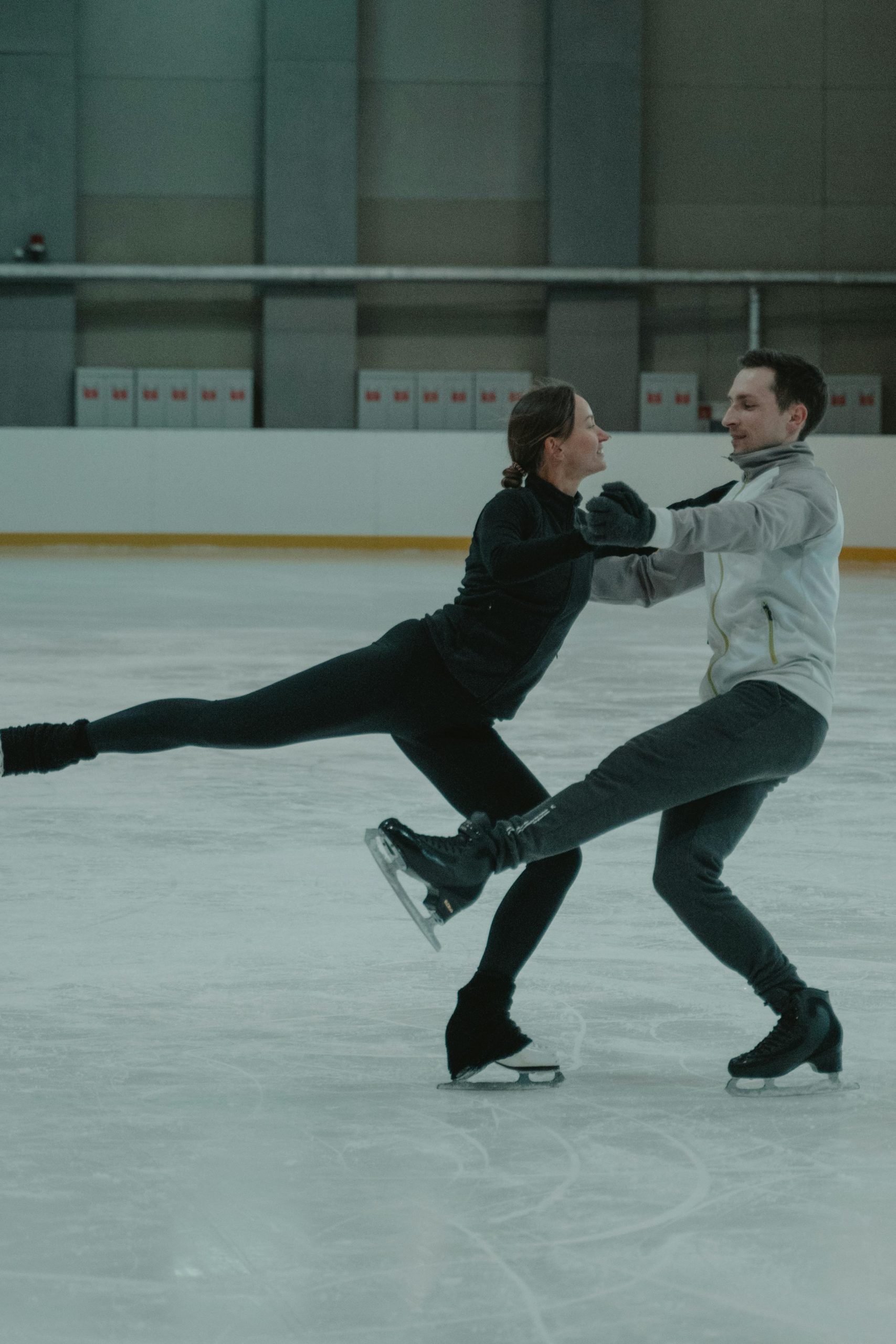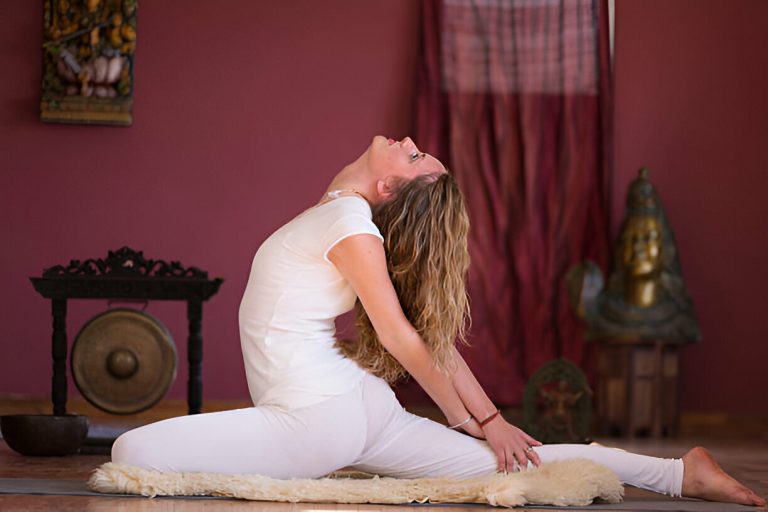Rooted and Centered: Grounding Yoga Poses for Inner Balance

Grounding yoga poses, often referred to as ‘earth’ or ‘rooting’ practices within the yogic tradition, are designed to foster a sense of stability and connection to the earth. These poses encourage practitioners to draw energy up from the ground, quite akin to a tree sending roots deep into the soil. By prioritizing a stable base and a steady breath, individuals can cultivate a feeling of centeredness and calm.
Rooted and Centered: Grounding Yoga Poses for Inner Balance leverage the body’s relationship to gravity to enhance physical and emotional equilibrium. For example, Tadasana (Mountain Pose) serves as a foundational pose, guiding the practitioner to stand firm and tall, embodying the steadfast nature of a mountain. These grounding poses are specially curated to promote a tranquil mind and a strong, resilient body. They work by activating the lower parts of the body such as the legs, feet, and pelvis, areas that directly relate to our sense of being grounded.
Incorporating Rooted and Centered: Grounding Yoga Poses into a daily practice can have an appreciable effect on one’s ability to navigate stressful situations. The physical act of grounding helps reduce the flight-or-fight response, directing the practitioner’s attention away from anxiety-driven thought patterns. The practice involves not only physical alignment but also an attentive focus on the breath, which is believed to enhance mental clarity and fortitude.
The following text will delve into how specific grounding yoga poses can be integrated into different parts of a yoga sequence, taking into account their adaptability for beginners and for those with more advanced practices. This exploration will include an analysis of the physiological and psychological mechanisms at play, detailing how these poses contribute to an individual’s holistic wellness.
Grounding yoga poses offer a unique and tangible manner by which to anchor one’s self during the ebb and flow of life’s tumultuous tide. The subsequent paragraphs will feature anecdotes and testimonials from seasoned yogis who incorporate Rooted and Centered practices into their regimen, further underscoring the validity and versatility of these grounding techniques. Through their experiences, readers will gain insight into the transformative potential that such poses have within the context of sustained personal yoga practice.
- Grounding yoga poses foster a sense of stability and balance, connecting the practitioner to the present moment and promoting mental and emotional equanimity.
- Examples of effective grounding yoga poses include Tadasana (Mountain Pose), Balasana (Child’s Pose), and Vrksasana (Tree Pose), which help to calm the mind and strengthen the body’s connection to the earth.
- Regular practice of grounding yoga poses has been associated with reduced stress and anxiety levels, as these poses encourage deep breathing and mindful movement.
- Incorporating props such as yoga blocks or mats can enhance the grounding effects of the poses for beginners or those with limited mobility, ensuring a safe and supportive practice.
- Practitioners are encouraged to focus on their breath while performing grounding yoga poses, as breathwork is a vital element that augments the grounding experience, helping to center the mind and increase body awareness.
- Alignment and attention to posture in grounding poses are crucial for reaping maximum benefits without causing injury; therefore, it’s essential to listen to one’s body and modify poses as necessary.
- Grounding yoga poses can serve as a therapeutic tool for those facing life’s challenges, providing a tangible sensation of grounding when feelings of unsteadiness or chaos arise.
- Building a routine that integrates grounding yoga poses can be particularly beneficial in the morning to set a stable tone for the day or in the evening to unwind and release the day’s stress.
- A key aspect of grounding poses is the opportunity they provide for introspection and cultivating a deep connection with oneself, leading to greater self-awareness and inner peace.
How Can Grounding Yoga Poses Foster Inner Balance?
Grounding yoga poses are physical postures that are believed to create a sense of stability, both mentally and physically. They typically involve a strong connection to the earth, with the hands, feet, or other parts of the body pressing firmly into the ground. This connection is thought to enhance our ability to center ourselves and find balance in our lives. “Rooted” refers to the strong foundation these poses establish, while “centered” describes the balanced state of mind that can be achieved. The term “inner balance” relates to a harmonious state of being where mind and body are aligned. Practicing these types of yoga poses can lead to a more grounded disposition, helping to reduce stress and anxiety.
Yoga is more than just a physical exercise; it’s a practice that encompasses mental, emotional and spiritual well-being. The concept of grounding is deeply woven into the philosophy of yoga. The idea is to connect with the earth’s energy, to find a solid foundation from which one can grow. Grounding yoga poses are particularly helpful for those who feel scattered, anxious, or unstable. By focusing on creating a stable base and connecting with the ground, practitioners can cultivate a sense of calm and groundedness. This sense of stability can be particularly beneficial in today’s fast-paced world, where many people feel disconnected from their bodies and the earth. Grounding yoga poses offer a pathway back to equanimity.
Meditative Techniques for Stress Reduction
Deep meditative practices have been utilized for centuries as a means to lower stress levels and enhance mental clarity. One such technique is known as mindful breathing, where individuals focus solely on their respiratory patterns, encouraging a calm and present state of mind. By inhaling deeply through the nose, holding for a moment, and then exhaling slowly through the mouth, stress hormones diminish, thus promoting relaxation. Additionally, visualization during meditation, which involves picturing a serene and idyllic setting, can transport the meditator to a peaceful place, further reducing feelings of anxiety and tension. When practiced consistently, these techniques can significantly lower stress and contribute to a greater sense of inner harmony.
Nutritional Choices to Support Emotional Well-being
Food choices play a critical role in regulating mood and emotional health. A diet rich in omega-3 fatty acids, for example, is known to have a positive effect on reducing depression symptoms. Foods such as salmon, chia seeds, and walnuts are packed with these beneficial fats and can be incorporated easily into daily meals. Fermented foods like yogurt, kefir, and kimchi, on the other hand, contain probiotics which support gut health, thus influencing the production of neurotransmitters like serotonin in the brain. Integrating a variety of fruits, vegetables, lean proteins, and whole grains creates a balanced diet that can stabilize blood sugar levels, curbing mood swings and promoting a general sense of well-being.
Physical Activity and Its Role in Enhancing Mental Fortitude
Engaging in regular physical activity is another avenue to achieve mental resilience. Physical exercises such as running, swimming, or cycling trigger the release of endorphins, the body’s natural mood lifters. These activities also help in sharpening focus and building stamina, both physically and mentally. Furthermore, activities that require precision and concentration, such as martial arts and rock climbing, demand mindfulness and full engagement in the present moment, which can act as a natural diversion from daily stressors. A consistent routine of diverse exercises can foster a sense of accomplishment and self-confidence, thereby supporting overall mental health.
Artistic Expression as an Outlet for Emotional Release
Artistic activities such as painting, writing, or playing a musical instrument can serve as powerful mediums for expressing emotions and achieving catharsis. The process of creating art allows for the translation of thoughts and feelings into physical form, providing a non-verbal mode of releasing pent-up emotions. Engaging in repetitive artistic actions, such as stroke patterns in painting or chord strumming on a guitar, can also offer meditative benefits similar to that of grounding yoga practices. This emotional outlet can lead to a deeper understanding of oneself and a release of creative energy that might have been suppressed, contributing to a more centered and contented state of being.
What are grounding yoga poses and why are they important for inner balance?
Grounding yoga poses, also known as ‘rooted’ poses, are physical postures that create a solid foundation and connection with the earth. These poses typically involve the feet and hands making firm contact with the mat or ground, which helps in stabilizing and anchoring the body and mind. They are important for inner balance as they promote a sense of steadiness, calmness, and a return to the present moment, which can be essential in managing stress and anxiety.
Practicing grounding poses can also help in improving focus and concentration. By directing awareness to the points of contact between the body and the earth, one can redirect scattered thoughts and cultivate a mindful connection with the present. This approach can be particularly useful for centering emotions and energies that may feel out of alignment and fostering an overall sense of equilibrium.
Can grounding yoga poses help alleviate anxiety and stress?
Yes, grounding yoga poses are known to be effective in alleviating symptoms of anxiety and stress. Engaging in these poses requires mindfulness and deep breathing, which activate the body’s relaxation response. This can lower cortisol levels—the stress hormone—and can even lead to a decrease in the heart rate and blood pressure, helping the body to relax and release tension.
Additionally, the act of grounding can help to distract from anxious thoughts by focusing the mind on physical sensations and the movement of breath in the body. As individuals practice these poses regularly, they can develop tools to better manage stress in their everyday lives and cultivate a deeper sense of peace and tranquility.
What are some examples of effective grounding yoga poses?
Effective grounding yoga poses are those that enhance the connection to the earth and balance the body. Examples include Tadasana (Mountain Pose), Balasana (Child’s Pose), Vrksasana (Tree Pose), and Adho Mukha Svanasana (Downward-Facing Dog Pose). Tadasana establishes a firm base through the feet and aligns the entire body, while Balasana gently stretches and relaxes the back, promoting a grounded feeling.
Vrksasana, though a balancing pose, requires a rootedness through the standing foot, which can help in cultivating focus and steadiness. Adho Mukha Svanasana stretches the hands and feet along the mat and encourages a strong body connection with the floor. Together, these poses represent a range of options for individuals seeking to enhance their sense of grounding through yoga.
How often should one practice grounding yoga poses for optimal benefits?
Grounding yoga poses can be practiced as often as daily for optimal benefits. Incorporating these poses into a daily routine can significantly enhance one’s sense of grounding and balance over time. Consistency is key, as regular practice can deepen awareness and the ability to remain present, both on and off the yoga mat.
However, it is important to listen to one’s body and to not overdo it. Starting with a few minutes each day and gradually increasing the duration can allow the body to adapt without causing undue stress or injury. As with any exercise regimen, it is often beneficial to vary the routine and include different types of poses to ensure a holistic approach to physical and mental wellness.
Are grounding yoga poses suitable for beginners?
Yes, grounding yoga poses are suitable for beginners and can be an excellent way to start a yoga practice. Many grounding poses are simple and require no previous experience with yoga. They can be modified to suit individual flexibility and strength levels and often have variations that make them accessible for people of all abilities. Instructors can provide guidance on modifications to ensure that beginners feel stable and supported in their practice.
It is important for beginners to pay attention to their body’s signals and to practice with mindfulness to avoid injury. Beginners may find that starting with a smaller selection of poses and gradually increasing the variety and duration of practice is a comfortable way to incorporate grounding poses into their yoga regimen.
Can grounding yoga poses improve physical balance?
Grounding yoga poses can indeed improve physical balance. These poses often involve stabilizing the lower body and engaging core muscles, which are essential components of balance. By practicing poses that encourage a grounding effect, individuals can develop better proprioception—the awareness of one’s body in space—which is instrumental in balancing the body.
Moreover, as one continues to practice these poses, muscle strength, particularly in the legs and core, is enhanced. This added strength, along with improved focus and coordination, contributes to better physical balance over time. Consequently, individuals may notice improvements not just in their yoga practice but also in daily activities that require balance and stability.
What is the role of breathwork in grounding yoga practice?
Breathwork, or pranayama, plays a critical role in grounding yoga practice. It helps bridge the gap between the physical and mental aspects of yoga, allowing for a deeper connection to the present moment. By focusing on deep, rhythmic breathing, individuals can enhance their ability to settle into each pose and facilitate a state of calm and relaxation that is key to grounding.
The practice of coordinating breath with movement also helps maintain steady focus and concentration. Proper breathwork ensures that oxygen is efficiently circulated throughout the body, nourishing muscles and organs, which can amplify the grounding effects of the poses. This mindful breathing is integral to achieving the balance and centeredness that are the goals of a grounding yoga sequence.
How can individuals with limited mobility engage in grounding yoga poses?
Individuals with limited mobility can still engage in grounding yoga poses by utilizing modifications, props, and chair yoga techniques. Props such as blocks, straps, and cushions can help in achieving the proper alignment and stability in a pose, without straining the body. Modifications can mean adjusting the pose to meet one’s current level of flexibility and strength, such as performing poses while seated or using a wall for support.
Chair yoga is especially beneficial for those with mobility concerns as it allows practitioners to perform yoga poses while seated, making it accessible and reducing the risk of falling or overexertion. All these adaptations ensure that the grounding and centering benefits of yoga can be enjoyed by everyone, regardless of their physical limitations.
What mental health benefits can come from practicing grounding yoga poses?
Mental health benefits from practicing grounding yoga poses include improved mood, decreased symptoms of depression, and enhanced cognitive function. Grounding poses help in releasing tension from the body, which is often connected to stress and negative emotions. By fostering a sense of tranquility and physical relaxation, these poses can also lead to a clearer and more positive state of mind.
Focusing on the present moment during grounding yoga practice can also help in managing intrusive or racing thoughts, a common symptom in anxiety disorders. Regular practice may cultivate a greater sense of mindfulness, which is associated with increased emotional regulation, resilience to stress, and overall mental well-being.
Can grounding yoga poses be integrated into a flow sequence?
Grounding yoga poses can absolutely be integrated into a flow sequence to create a dynamic and balanced practice. By including these poses in transitions or as part of a sequence’s foundation, practitioners can enjoy the stabilizing effects while still experiencing the fluidity and movement that come with a flow. Grounding poses can act as starting positions from which to enter more active poses or as resting points to regain composure and breath control.
Integrating grounding poses into a flow sequence can also help in maintaining a grounded energy throughout the practice. This approach ensures that even as intensity increases, there is a continuous return to centeredness and stability, making the sequence feel more cohesive and balanced. It’s valuable to include a mix of poses to address all aspects of physical and mental health within a yoga session.
Final Thoughts
Grounding yoga poses are essential components of a balanced yoga practice, promoting stability and connectedness with the earth. These poses are powerful tools for cultivating inner balance, as they encourage the practitioner to slow down, focus on the present moment, and strengthen the foundation of their physical and emotional well-being. By regularly incorporating grounding yoga poses such as Tadasana, Balasana, and Vrksasana, individuals can develop a sense of calm and resilience that helps manage stress and anxiety.
Moreover, grounding yoga poses aid in enhancing body awareness and alignment, which is crucial for injury prevention and the maximization of the benefits of one’s yoga practice. These poses allow for a deep connection with the breath, leading to a tranquil mind and a more meditative state. As one becomes more rooted and centered, the practice paves the way for deeper spiritual exploration and self-discovery.
In essence, grounding yoga poses are not just physical postures; they are a reflection of our relationship with ourselves and the earth. They serve as a foundation upon which a stable, centered, and harmonious life can be built, bringing about a profound sense of inner balance that resonates in all aspects of one’s existence. Practitioners are encouraged to return to these grounding poses whenever they feel the need to re-establish their connection to the earth and to their core.






